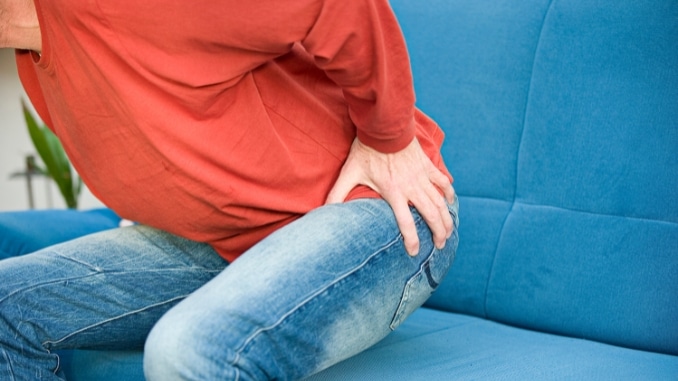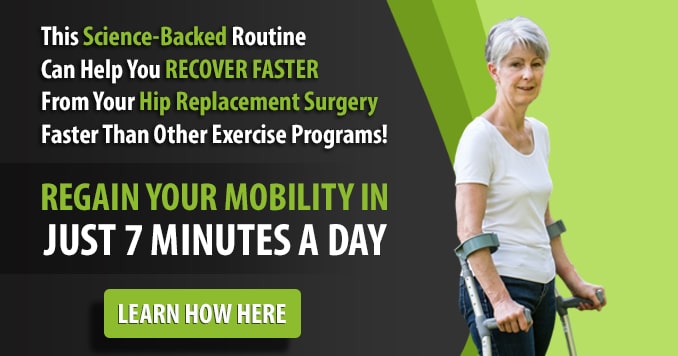Recovering from a dislocated hip [1] can be a long road, but with the right dislocated hip exercises and knowledge, you can restore hip stability, reduce pain, and avoid future injury.
A hip dislocation occurs when the ball of your hip joint (the femoral head) pops out of its socket (acetabulum). This can result from trauma like a car accident or a fall and is often accompanied by severe hip pain, muscle spasms, and mobility loss.
Once your hip is guided back into place—either manually or surgically—rehabilitation exercises become vital. For patients, physical therapy plays a key role in strengthening the hip muscles, improving joint mobility, and treating symptoms like instability or nerve discomfort in the foot or leg.
Before beginning, ensure you have medical clearance and only perform these in a pain-free range of motion. If you experience any discomfort, stop and rest.
Bed-Based Hip Exercises (Early Stage)
1. Hip/Knee Flexion
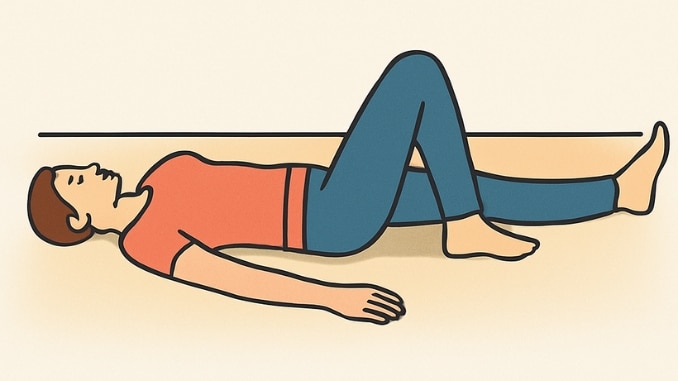
- Position: For this dislocated hip exercises, lie on your back with arms and legs extended.
- Movement: Slide your foot toward your buttocks, keeping the leg straight and your foot on the floor.
- Goal: Engage the hip joint without lifting the foot.
- Reps: 10 repetitions per leg, 1 set.
2. Hip Abduction/Adduction
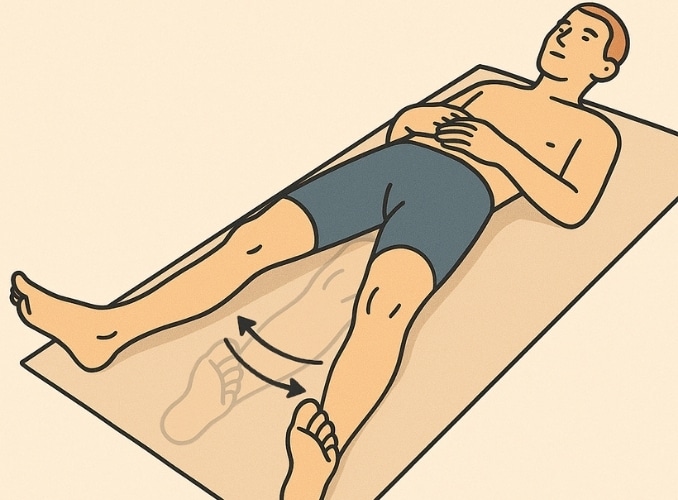
- Position: Lie on your back, legs extended.
- Movement: Slowly slide your affected leg out to the side (hip abduction), then bring it back (hip adduction).
- Focus: Activate the gluteus medius and improve hip mobility. [2]
- Reps: 10 repetitions, each leg.
3. Hip Bridging
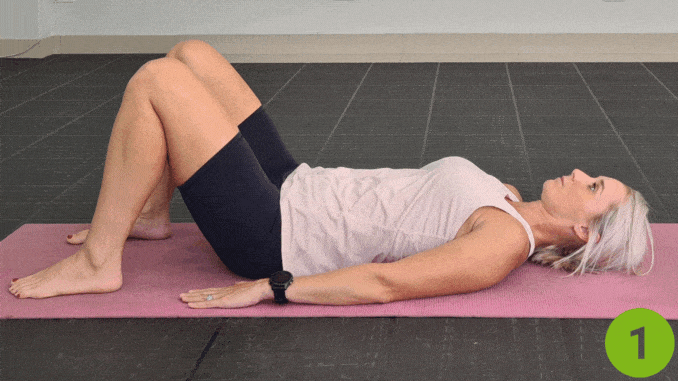
- Position: Knees bent, feet flat on the floor.
- Movement: Lift your hips until your knees, hips, and shoulders are aligned.
- Tip: Squeeze the gluteus maximus at the top.
- Reps: 10 reps, 1 set.
Chair-Based Hip Exercises (Intermediate Stage)
4. Heel and Toe Taps
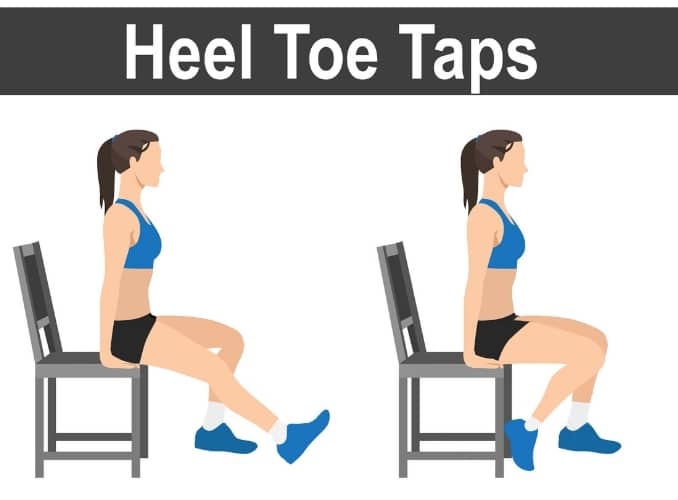
- Position: Sit tall in a chair.
- Movement: Alternate between lifting your heels while keeping your toes on the ground, then lifting your toes while keeping your heels on the ground.
- Reps: 10 reps per movement
5. Knee Flexion/Extension

- Position: Seated with feet on the floor.
- Movement: Straighten the affected leg, aligning the thigh and foot, then slowly lower.
- Goal: Improve knee and hip coordination.
- Reps: 10 reps each side.
Standing Hip Exercises (Advanced Phase)
6. Standing Heel Raises
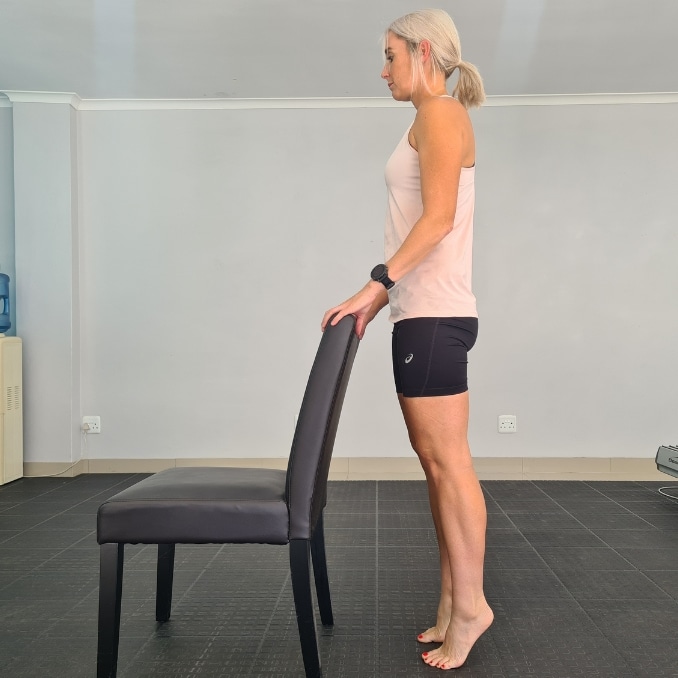
- Support: Hold a chair or wall.
- Movement: Raise heels off the ground; balance on your toes.
- Strengthens: Calves and hamstrings.
- Reps: 10 reps.
7. Standing Hip Flexion

- Movement: Lift your knee to chest level (like marching in place)
- Muscles Activated: Hip flexors, especially the iliopsoas.
- Reps: 10 per leg.
8. Standing Hip Abduction

- Movement: Lift your leg sideways (top leg), then return to start.
- Muscles Worked: Gluteus medius for hip stability.
- Reps: 10 each side
9. Standing Hip Extension
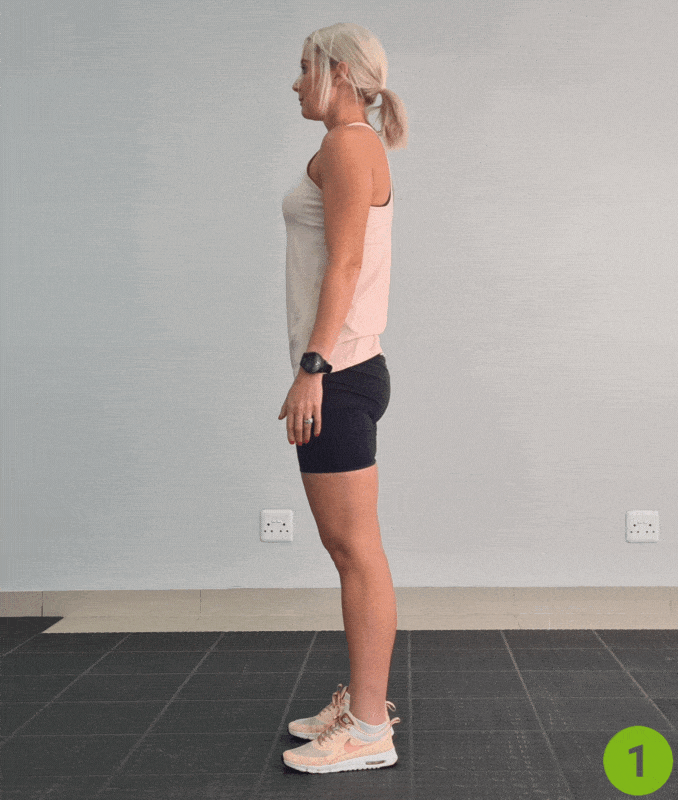
- Movement: Move one leg backward (without bending the knee).
- Target Areas: Gluteus maximus and hamstrings.
- Reps: 10 reps per leg.
10. Supported Squats

- Setup: Stand with feet hip-width apart, hold a sturdy surface.
- Action: Bend knees, lower body as if sitting.
- Tip: Keep knees behind toes and back straight.
- Reps: 10 reps.
Best Practices While You’re Healing from a Hip Dislocation
- Start Slow – Avoid aggressive motions, especially those involving external hip rotation or weight-bearing on the affected side too early.
- Prioritize Hip Stability – A dislocated hip can be guided back into place either by manually using the hand or repaired through surgery. But rehabilitation through Physical Therapy is essential to speed up the healing process and decrease the increased risk of recurrence of dislocation.
- Use Supportive Tools – A resistance band can add challenge as your strength improves, and a wall or chair can support balance during standing exercises.
- Keep the Joint Mobile – Gentle stretching exercises for the hamstrings and thighs help maintain flexibility and prevent stiffness in the hip joint.
- Watch for Symptoms – Monitor for any pain, swelling, or hip instability. These could indicate improper form or that your body needs more rest.
According to Dr. David Geier, MD Board-Certified Orthopedic Surgeon, Former Director of Sports Medicine, Medical University of South Carolina,
“After a hip dislocation, regaining strength in the hip abductors and gluteal muscles is critical. These muscles—especially the gluteus medius—help stabilize the pelvis and prevent recurrent dislocations. I always recommend progressive weight-bearing exercises and close guidance through physical therapy to ensure proper motion mechanics. Avoiding movements involving excessive external hip rotation early in recovery is essential to prevent reinjury.”
Final Thoughts on Recovery
A dislocated hip [3] is a serious injury that impacts more than just your mobility—it affects your entire body’s motion, balance, and quality of life. Whether you’re recovering from surgery or non-surgical reduction, consistent physical therapy and targeted exercises are your path to a strong, stable hip.
Remember to perform all movements mindfully, prioritize your body’s signals, and focus on gradual strength building. Soon enough, your hip muscles, joints, and ligaments will be back in action—stronger than ever!
If you’re experiencing hip pain or suspect hip problems like dislocation or instability, seek medical attention promptly. The faster you treat it, the better your outcome.
Frequently Asked Questions
What are the best dislocated hip exercises to start with after an injury?
The best starting exercises focus on gentle mobility and reducing hip instability. Begin with bed-based movements like hip/knee flexion and hip abduction/adduction, which promote blood flow and maintain joint range without placing stress on the hip joint. Always keep the leg straight when needed and move within a pain-free range to prevent further injury.
Can dislocated hip exercises reduce the future risk of dislocation?
Yes! Regularly performing targeted exercises for the gluteus medius, gluteus maximus, and hip adductors/abductors builds strength and balance around the hip joint. This strengthens the supporting muscles, improves joint stability, and minimizes the chance of re-injury due to an unstable hip or poor movement patterns.
How long does it take to recover from a dislocated hip with exercise?
Recovery varies depending on factors like age, severity, and adherence to your rehab program. Most patients regain significant function within 6–12 weeks with consistent hip dislocation exercises, stretching, and rest. Full return to activities may take longer, especially if surgery was involved or if there’s underlying hip instability.

